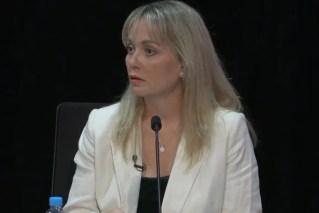An online tool is helping voters organise their Senate preferences before they go to vote

Voting in the Senate: TND
With up to 79 candidates contesting the upper house in some states, voting below the line can be confusing and time-consuming.
Which is where Finder’s Senate Voting Card Creator comes in.
The tool, created by Finder developer Ken Tsang, allows people to decide their voting preferences at home, print off their choices, and then manually copy the numbers on election day.
“Voting can be unwieldy because you have this massive Senate ballot paper,” Mr Tsang told The New Daily.
“If you’ve done all the research ahead of time, you want to just go in and fill in the numbers that you know and not spend a lot of time looking for the candidates you want to support.”
Users select their state and rank a small handful of parties.
Then they’re able to individually select and order the candidates from those particular parties.

Finder’s new tool allows people to organise their Senate preferences before polling day.
The end result is a piece of paper that’s like a checklist of where to write the numbers 1 to 12, or beyond.
Mr Tsang first created the tool for Finder at the 2016 election, and has since updated the candidates at the 2019 and 2022 elections.
“There were a bunch of tools that existed before 2016 and they just weren’t updated when those new rules came in,” he added.
“So I thought I’d fill the gap for people who still wanted to vote below the line.”
This isn’t the first time Mr Tsang has come up with an online solution to a real-world problem.
Earlier on in the pandemic, the Sydney-based developer made headlines for his vaccination clinic map and vaccine dashboard.
“People who are heavily involved in this sort of political discourse are probably the people who are enjoying this one the most,” he said.
How-to-vote cards return
Although the Senate Voting Card Creator helps people organise their preferences below the line, some political parties are hoping voters will follow their how-to-vote cards above the line instead.
Labor, the Coalition and some minor parties have already released their how-to-vote cards for the Senate.
But amid talk of “preference deals” it’s ultimately up to voters to decide where their preferences flow.
At the 2016 double dissolution election, Tasmanian Senator Lisa Singh was placed in an “unwinnable” sixth position on the Labor ticket.
But enough Tasmanians voted below the line to see Senator Singh outpoll her Labor colleagues and return to the upper house.
ANU’s Australian Election Study found that, during the 2000s, about 80 to 90 per cent of respondents followed voting prompts for the Senate.
For the House of Representatives, the figure has always been much lower and continues to trend downwards.
But, as ABC election analyst Antony Green added on Twitter: “The reason major parties hand out so many HTVs is to ensure votes are formal.”








